Unique Logistics Solutions to Complex Container Drayage Issues
Today, more than 80% of global shipping involves containers. They're packed with everything from personal storage items in dry containers to heavy machinery on flat rack containers. For business owners shipping products, getting a container from point A to point B requires precise planning and high-level tracking. But that's easier said than done when global supply chains become over-congested, leading to loading time issues and delays.
That's bad news for business owners who are already under a massive amount of stress. The truth is that container storage delays can cripple a business, but there's a viable solution: drayage brokers in San Francisco, CA like RelyEx. Drayage companies provide unique solutions to minimize demurrage and help ensure the successful delivery of your freight.
With more than 30 combined years of experience and a solutions-oriented team, RelyEx has quickly become the first choice for streamlined, efficient drayage services. To understand the true value of RelyEx's offerings in the global logistics industry, it helps to understand first what drayage is and why it's used.
What is Drayage and Why Is It Important?
If you're a seasoned business owner who uses port drayage to transport your products, you know exactly how important the service can be. But if you were to poll a group of random people, you may get five different definitions of the term "drayage." That begs the question, how is one of the most crucial steps in the supply chain and most vital components of global trade such a confusing concept? When you break it down, it's not too difficult to grasp.
Drayage, by definition, means the transportation of freight from an ocean port to another destination. Today, drayage is also used to describe the process of transporting products and goods over short distances or over "the first mile."
While drayage often means short-distance movements during the supply chain process, it's primarily used in the container shipping space. Drayage loads usually have arrival and departure points in the same city and don't include long-haul, national transportation.
Let us know how we can help.
drayage broker Services
Service Areas
Because a drayage load can mean a few different things, confusion among carriers is common. Many carriers link drayage with going into a port, but that isn't always true. While all drayage loads typically originate from a port of entry, there are often several legs of a drayage journey before a container turns up at its final stop. Legs of a drayage load may include:
Why Are Drayage Companies in San Francisco, CA So Important?
You may be thinking, what's so important about drayage? It's such a small step in the container storage transport process. In reality, it's an integral piece needed in the logistics industry and a crucial part of U.S. supply chain management.
To truly understand the importance of drayage, let's use flowers as an example. Most cut flower shipments enter the market from areas in South America until they end up at Dutch auction houses. Once there, wholesalers purchase flowers in bulk and send those products to retail outlets worldwide. Because flowers are perishable, they typically need to be refrigerated and are often shipped in reefer containers. These refrigerated vessels must maintain a certain temp to prevent loss.
Drayage companies like RelyEx allow flower shippers to send their products from Argentinian ports to airports in the Netherlands with peace of mind because their products are protected. The only way to accomplish this feat is with the help of swift, meticulous port drayage services. Drayage companies allow flower shippers to send their products from Argentinian ports to airports in the Netherlands with peace of mind, because their products are protected. The only way to accomplish this feat is with the help of swift, meticulous port drayage services.
If port drayage is compromised, it can cause delays and even fines. You know the packages you get delivered to your front door from apps like Amazon? Without drayage and drayage brokers, one or two-day shipping times wouldn't even be possible.
As a multi-billion-dollar industry in the U.S. alone, it seems like drayage shipping issues shouldn't exist. But the fact is inefficiencies and congestion are still major problems at ports. Whether it's a lack of carriers, absent chassis, or overburdened terminals, delays lead to missed deadlines, lost revenue, and worse.
But anytime challenges exist, so too do innovative solutions.
QUOTE REQUEST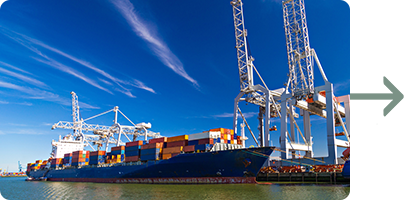
Port
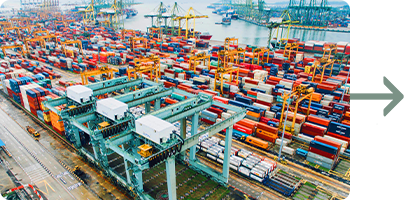
Yard
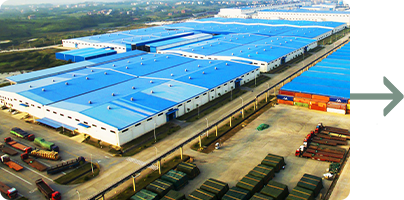
Warehouse
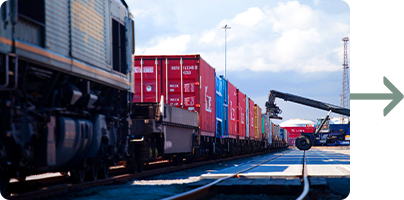
Rail

The RelyEx Difference
RelyEx was created because our founders saw a need in the logistics space for more reliability and efficiency. The reality of the shipping and logistics industry is that it has become very transactional. It's an odd evolution, because most businesses seek a third-party logistics partner that is accessible, transparent, and committed to providing solutions.
As the logistics space continues to grow, it creates newfound expenses and complexities. Clients like ours know that and need a supply chain partner who is genuinely interested in their business. By understanding the needs of our customers and carriers, we can provide the most reliable, effective drayage services possible.
Unlike some drayage companies in San Francisco, CA, we begin managing your containers before they ever hit the ports by mapping out the most efficient pathways of delivery. That way, our team can discover the best drayage pathways to expedite delivery time and reduce fees that cut into profits.
Our valued drayage customers choose RelyEx because:
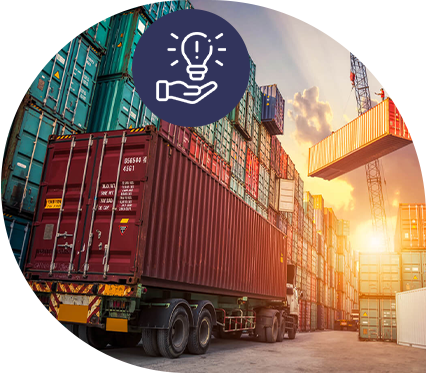
RelyEx Solves Problems
At RelyEx, we like to consider ourselves problem solvers. The nature of the container drayage industry presents new challenges every day, but we're firm believers that there's a solution to every hurdle we encounter. And while some drayage businesses implement a reactive approach, RelyEx customers choose us for our proactive mindset. We take pride in solving your company's drayage challenges to help you avoid frustrating fees, missed expectations, and delayed shipments. We strive to make every transaction successful and streamlined by partnering with shippers who prioritize transparent, prompt, and accurate communication.
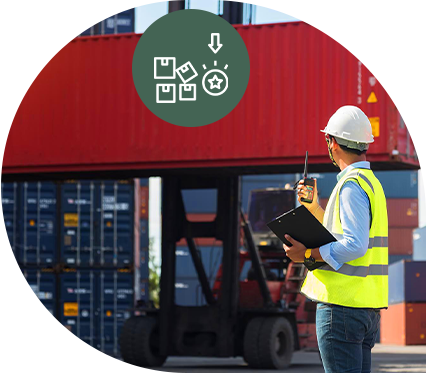
RelyEx Has a Unique Vantage Point
RelyEx approaches your business from the customer's perspective - a unique approach that helps us provide high-quality, effective drayage services. We've been in the customers' shoes, know their pain points, and because of that, provide first-hand solutions to stressful supply chain issues. With over 30 years of collective knowledge, our team excels in:
- Inventory Management
- Logistics
- Purchasing
- Finance
Our varied, high-level drayage shipping experience helps us achieve our overarching goal: expertly managing your freight movement needs. That way, you can direct your time and focus on growing the core aspects of your business while we handle the heavy lifting. Throw in proactive planning to avoid bottleneck situations and strong communication for transparent customer relations, and you can see why so many companies trust RelyEx.

RelyEx Nurtures Strong Carrier Relationships
When it comes to shipping logistics, it only takes one mistake by a mediocre worker to disrupt your business. That's why, at RelyEx, we pride ourselves on forming and nurturing relationships with carriers who match our standards of care. Our founding partner started his career transporting freight for companies as an on-demand carrier. He uses that knowledge to maximize the resources of our carriers so that our customer's expectations aren't just met - they're exceeded.
Why Choose RelyEx as Your
Drayage Company in San Francisco, CA?
Based in the port city of San Francisco, RelyEx has a keen understanding of the challenges of managing the inbound and outbound flow of containers. Our team of container drayage experts provides your business with unique solutions to nuanced shipping problems, minimizing demurrage and ensuring the successful delivery of your freight.

Customers choose RelyEx because:
- We are a reliable drayage logistics partner that manages your freight from beginning to end
- We have a rare industry vantage point with 30+ years of client-side experience
- We foster and fortify the strongest vendor relations
- We take a proactive approach to problem-solving, not a reactive approach
Let us know how we can help.
 843-885-3082
843-885-3082

Your Drayage Shipments Managed from Start to Finish
Some drayage brokers don't care how customers feel about their service as long as they sign a contract and get paid. As a solutions-oriented team, RelyEx takes the opposite approach. We're motivated by the opportunity to overachieve for our customers and to provide them with the best logistics experience possible. With professional experience as carriers and shippers ourselves, we know the roadblocks and challenges you're facing. We excel at mapping out the best plans of action to solve those problems. But that's just the start.
Our tracking experts monitor and manage every aspect of your drayage shipment from booking to delivery, 24/7. Once booked, we look for the availability of your containers hourly once they're at port. When they arrive, our team acts quickly to access your storage containers when they're available.
Plus, RelyEx ensures your company's requirements are met by the carrier during loading and delivery and provide necessary documentation as fast as possible. With real-time tracking updates and access to our customer service professionals, your team has complete visibility throughout the shipping process.
We Source Top-Notch Operators at the Best Prices
Over the years, RelyEx has built a strong network of drayage carriers, transloading locations, and container storage spaces to provide you with the best possible options to match your drayage service needs. We know that searching for quality service presents an added layer of complexity and stress to our customers. That's why we work hard to take that off your plate by connecting you with our reliable shipping partners.
With a background moving freight as an on-demand carrier, our founding partner understands how to maximize the resources and equipment of our carriers to match your needs.
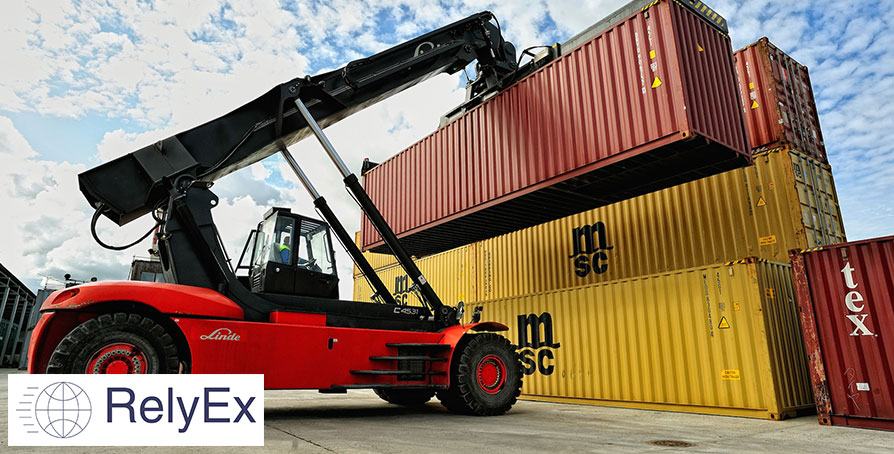

We Make Transparent, Timely Communication a Priority
Like other industries, the global logistics space is complex. Mistakes will be made, and problems will happen. With those truths in mind, RelyEx has built its reputation as problem solvers. Unlike other drayage companies, we don't shy away from this industry's complexities because we take pride in solving problems. Even better, we aim to do what's needed to avoid those problems altogether.
As your logistics partner, we will provide your company with accurate, transparent, and prompt communication. If there are unexpected issues, we'll notify you immediately and will provide several options to remedy the problem. We even offer custom reporting for large clients who need at-the-moment updates and quick access to shipment documentation.
We Have Robust Project Management Experience
Why let the unpredictability of your industry dictate your success? With a background working in manufacturing, our founders are familiar with the demands of managing production schedules and sales orders. That experience makes it abundantly clear to us that every business and industry is different. If you struggle with seasonal surges or other factors, our team supports your business with a mapped-out plan and schedule, so you stay ahead of the game.
QUOTE REQUEST
How to Avoid
Demurrage Fees for Your Business
Based in the port city of San Francisco, RelyEx has a keen understanding of the challenges of managing the inbound and outbound flow of containers. Our team of container drayage experts provides your business with unique solutions to nuanced shipping problems, minimizing demurrage and ensuring the successful delivery of your freight.
What is shipping demurrage?
Demurrage is a charge issued by a port, carrier, or railroad company for storing containers that do not load and unload their cargo promptly. Once the daily limit of free time is exceeded, shippers are charged daily demurrage fees until their cargo is shipped. Though different ports have different policies, charges can range from $75 to $150 per container, per day, for a set number of days. Additional demurrage fees are incurred if a shipper exceeds the port's parameters.

What causes demurrage charges?
Even when shippers maintain a tight schedule for unloading freight, external factors can play an uncontrollable part. Typically, shipping mistakes caused by human error trigger the most demurrage charges. Some of the most common causes of demurrage include:
- Paperwork Errors
- Payment Delays
- Documents Received Too Late

Paperwork Errors
Typically, shippers need four specific documents to clear shipments through customs: A Bill of Lading (or BOL), a commercial invoice, a packing list, and an arrival notice. Seasoned drayage brokers like RelyEx are used to preparing these documents, but new shippers tend to miss this step due to inexperience.
Payment Delays
If a shipper only pays for part of their shipment, a vessel operator may refuse to release their freight until their bill is fully paid. Payment delays lead to cargo detention at the port of entry, which triggers demurrage charges.
QUOTE REQUESTDocuments Received Too Late
Paperwork is needed when you're shipping goods with a drayage company. When documents like the Certificate of Origin or Bill of Lading arrive at their destination late, you can expect demurrage fees. RelyEx avoids this situation entirely by being proactive when submitting paperwork.
Additional causes for demurrage fees can include:
- Damaged Container Storage
- Custom Released Containers
- Storage Containers Are Too Heavy
Free Consultation
RelyEx:
The Supply Chain Partner You Can Count On
At RelyEx, we know first-hand how stressful supply chain problems can be for business owners. Though drayage shipping might seem minor on the surface, it affects every stage of your shipping process. And when inevitable hurdles manifest, RelyEx propels you over the proverbial roadblocks with a proactive mindset and a passion for challenging projects. We believe that all problems have a solution, and our unique vantage point allows us to provide first-hand solutions to customers in a wide array of industries.
When it comes to your business, don't settle for anything less than RelyEx. Contact our office today to learn more about how we make your shipping experience streamlined and stress-free.
 843-885-3082
843-885-3082
Latest News in San Francisco, CA
Weather service makes big change to storm forecast for Bay Area
Amy Graffhttps://www.sfgate.com/weather/article/weather-service-makes-big-change-storm-forecast-19435334.php
The National Weather Service doubled the projected rainfall totals for a storm poised to sweep the San Francisco Bay Area Friday night into Saturday.In the original forecast, the agency predicted locations across the region would generally pick up...
The National Weather Service doubled the projected rainfall totals for a storm poised to sweep the San Francisco Bay Area Friday night into Saturday.
In the original forecast, the agency predicted locations across the region would generally pick up 0.1 to 0.5 inch of rain. In the latest forecast, the weather service forecasts most areas will record 0.2 to 1 inch.
Roger Gass, a forecaster with the weather service, said on Thursday morning that the weather models have been in disagreement around the forecast for this storm, but they were finally coming into agreement Thursday, leading meteorologists to make adjustments and nail down details.
“The confidence level in the forecast is going up,” he said.
The storm will likely be dropping down from the Gulf of Alaska and then swooping inland over southern Oregon and Northern California. He said the storm is nothing out of the ordinary and it’s not uncommon for the Bay Area to get some rain in May.
The first chance for rain falls in the Bay Area on Friday night in the North Bay. “The chance for rain then moves through the heart of the Bay Area on Saturday morning and then begins to taper off down to the south by end of Saturday,” Gass said. “Sunday is expected to be dry.”
Cooler temperatures may be a more noticeable impact from this storm than the rain. Overnight lows on Saturday and Sunday are forecast to drop into the 30s and 40s in many locations, while daytime highs will likely struggle to get out of the upper 50s. Daytime highs will be 5 to 15 degrees below normal, according to the weather service.
“San Francisco and Oakland downtown, possibly including a few other locations, may be nearing record lows Sunday and Monday mornings,” the agency said.
“If your weekend plans include overnight camping, hiking etc. expect 30s as low as 2500 feet, colder at higher elevations,” the weather service warned.
More News
— They halted hillside homes. Now they want Calif. hikers out, too. — Drunk tourist arrested for kicking bison in Yellowstone, officials say — Cheese competition gets ugly when Berkeley company is disqualified — Tech giant will reportedly make top bosses work 6 days a week
2024 NBA playoffs bracket, schedule, scores: Knicks knock out 76ers, advance to face Pacers in second round
Brad Botkinhttps://www.cbssports.com/nba/news/2024-nba-playoffs-bracket-schedule-scores-pacers-await-knicks-vs-76ers-winner-bucks-bounced-early-again/
The 2024 NBA playoffs are in full swing, and the Knicks and Pacers both advanced to the second round on Thursday night. The Knicks finished off their wild series with the 76ers, winning Game 6 in Philly by three points to move on to the Eastern Conference semifinals for the second year in a row. The Pacers, meanwhile, ousted the Bucks on Thursday night, winning Game 6 at home for a 4-2 series win. The Bucks did not have Giannis Antetokounmpo for any of their brief playo...
The 2024 NBA playoffs are in full swing, and the Knicks and Pacers both advanced to the second round on Thursday night. The Knicks finished off their wild series with the 76ers, winning Game 6 in Philly by three points to move on to the Eastern Conference semifinals for the second year in a row. The Pacers, meanwhile, ousted the Bucks on Thursday night, winning Game 6 at home for a 4-2 series win. The Bucks did not have Giannis Antetokounmpo for any of their brief playoff run, as their two-time MVP was sidelined with a calf injury.
The Knicks and Pacers will square off in the second round, and just 10 teams remain in the postseason bracket. The Celtics became the first East team to punch their ticket to the second round on Wednesday night. The Celtics eliminated the Heat, blowing out Miami in Game 5 for a 4-1 series victory. The top-seeded Celtics will face either the Cavaliers or Magic in the next round.
The Timberwolves, Nuggets and Thunder are all moving on in the West. Minnesota and Oklahoma City swept the Suns and Pelicans, respectively, while Denver took out the Lakers in five games.
Game 6 in both the Cavaliers vs. Magic and Mavericks vs. Clippers series is set for Friday night as Cleveland and Dallas have the chance to move on.
Here's a look at the upcoming schedule, as well as all the playoff scores. All games airing on ABC, ESPN and NBA TV are streaming on fubo (try for free).
Thursday's playoff games
Below is a look at the complete playoff bracket.
2024 NBA playoff bracket
Upcoming NBA playoffs schedule
Friday, May 3Game 6: Magic vs. Cavaliers, 7 p.m., ESPN/fuboGame 6: Mavericks vs. Clippers, 9:30 p.m., ESPN/fubo
Saturday, May 4Game 1: Nuggets vs. Timberwolves, 7 p.m., TNT
Sunday, May 5Game 7*: Cavaliers vs. Magic, TBDGame 7*: Clippers vs. Mavericks, TBD
Monday, May 6Game 1: Knicks vs. Pacers, 7:30 p.m., TNTGame 2: Nuggets vs. Timberwolves, 10 p.m., TNT
Tuesday, May 7Game 1: Thunder vs. Clippers/Mavericks, TBD
Wednesday, May 8Game 2: Knicks vs. Pacers, 8 p.m., TNT
Thursday, May 9Game 2: Thunder vs. Clippers/Mavericks, TBD, ESPN/fubo
Friday, May 10Game 3: Pacers vs. Knicks, 7 p.m., ESPN/fuboGame 3: Timberwolves vs. Nuggets, 9:30 p.m., ESPN/fubo
Saturday, May 11Game 3: Clippers/Mavericks vs. Thunder, 3:30, ABC/fubo
Sunday, May 12Game 4: Pacers vs. Knicks, 3:30 p.m., ABC/fuboGame 4: Timberwolves vs. Nuggets, 8 p.m., TNT
Monday, May 13Game 4: Clippers/Mavericks vs. Thunder, TBD, TNT
Tuesday, May 14Game 5*: Nuggets vs. Timberwolves, TBD
Thursday, May 16Game 6*: Timberwolves vs. Nuggets, TBD
Sunday, May 19Game 7*: Nuggets vs. Timberwolves, TBD
NBA playoffs: First-round scores
Celtics vs. HeatGame 1: Celtics 114, Heat 94Game 2: Heat 111, Celtics 101Game 3: Celtics 104, Heat 84Game 4: Celtics 102, Heat 88Game 5: Celtics 118, Heat 84(Boston wins series 4-1)
Knicks vs. 76ersGame 1: Knicks 111, 76ers 104Game 2: Knicks 104, 76ers 101Game 3: 76ers 125, Knicks 114Game 4: Knicks 97, 76ers 92Game 5: 76ers 112, Knicks 106 (OT)Game 6: Knicks 118, 76ers 115(Knicks win series 4-2)
Bucks vs. PacersGame 1: Bucks 109, Pacers 94Game 2: Pacers 125, Bucks 108Game 3: Pacers 121, Bucks 118 (OT)Game 4: Pacers 126, Bucks 113Game 5: Bucks 115, Pacers 92Game 6: Pacers 120, Bucks 98(Indiana wins series 4-2)
Cavaliers vs. MagicGame 1: Cavaliers 97, Magic 83Game 2: Cavaliers 96, Magic 86Game 3: Magic 121, Cavaliers 83Game 4: Magic 112, Cavaliers 89 Game 5: Cavaliers 104, Magic 103
Thunder vs. PelicansGame 1: Thunder 94, Pelicans 92Game 2: Thunder 124, Pelicans 92Game 3: Thunder 106, Pelicans 85Game 4: Thunder 97, Pelicans 89(Oklahoma City wins series 4-0)
Nuggets vs. LakersGame 1: Nuggets 114, Lakers 103Game 2: Nuggets 101, Lakers 99Game 3: Nuggets 112, Lakers 105Game 4: Lakers 119, Nuggets 108Game 5: Nuggets 108, Lakers 106(Denver wins series 4-1)
Timberwolves vs. SunsGame 1: Timberwolves 120, Suns 95Game 2: Timberwolves 105, Suns 93Game 3: Timberwolves 126, Suns 109Game 4: Timberwolves 122, Suns 116(Minnesota wins series 4-0)
Clippers vs. MavericksGame 1: Clippers 109, Mavericks 97Game 2: Mavericks 96, Clippers 93Game 3: Mavericks 101, Clippers 90Game 4: Clippers 116, Mavericks 111Game 5: Mavericks 123, Clippers 93
Downtown S.F. street party draws thousands: ‘It’s bringing electricity to the area’
Roland Lihttps://www.sfchronicle.com/sf/article/s-f-downtown-street-party-19432067.php
The first of downtown San Francisco’s monthly First Thursdays block parties drew thousands to the city’s core as thumping bass, dancing crowds and food vendors enlivened the usually mellow area, with a giant disco ball hanging from a crane taking over Minna St.’s alleyway.Attendees browsed arts and crafts vendors on Second Street, painted a communal mur...
The first of downtown San Francisco’s monthly First Thursdays block parties drew thousands to the city’s core as thumping bass, dancing crowds and food vendors enlivened the usually mellow area, with a giant disco ball hanging from a crane taking over Minna St.’s alleyway.
Attendees browsed arts and crafts vendors on Second Street, painted a communal mural and listened to sketch comedy. Lines for food stands hawking Peruvian dishes, Oxtail and Nepalese momos stretched along the corridor.
It’s the latest in a series of new nighttime events around the city, including the Sunset and Chinatown night markets, efforts to inject energy into areas recovering from the pandemic.
Second Street was chosen as the “connecting line between Yerba Buena and East Cut” and because of the presence of a variety of restaurants and bars, said Katy Birnbaum, CEO of Into the Streets, the event organizer.
Into the Streets previously hosted the South Asian music-themed Bhangra and Beats, in the Financial District, which drew around 10,000 per event and is returning next week.
The event was inspired by Oakland’s long-running First Fridays street festival, which is also being held this week.
Before the pandemic, tech and office workers would flood the downtown San Francisco area, especially during rush hour. But there is now a trickle of that previous population, due to remote work and tech layoffs.
The event will be held each first Thursday of the month for the next 12 months in the same area, with sponsorship money for city fees and other costs coming from the Civic Joy Fund. Gap scion Bob Fisher, his wife Randi Fisher, and Levi Strauss & Co. provided half of the $1.5 million funding goal for the year.
Birnbaum, who has also worked on the city’s Sunday Streets program, said it was challenging to create a new brand and get partners involved.
“If they don’t have something to touch and see, it may be tough for people to jump in,” she said. “We’re building and landing the plane at the same time.”
Manny Yekutiel, co-founder of the Civic Joy Fund and owner of the events space Manny’s, which hosts Chronicle events, was hopeful the gathering will enliven downtown.
“The purpose is to create a new culture around showing up downtown,” he said. “I remember how it used to be. It is a much sadder state of affairs.”
“A once-a-month block party is not going to flip the switch,” he said. “But it’s bringing electricity to the area.”
Reach Roland Li: roland.li@sfchronicle.com; Twitter: @rolandlisf
After visit with grandfather, Yaz fuels Giants with Fenway HR
Craig Fordehttps://www.mlb.com/news/mike-yastrzemski-homers-at-fenway-park-in-giants-win
BOSTON -- When the baseball gods are present at Fenway Park, that’s usually good news for the home team, but a pregame visitor to the Giants’ clubhouse on Thursday morning handed the visiting club some much needed mojo as they pulled off a 3-1 victory and avoided a sweep.Prior to the game, Mike Yastrzemski wa...
BOSTON -- When the baseball gods are present at Fenway Park, that’s usually good news for the home team, but a pregame visitor to the Giants’ clubhouse on Thursday morning handed the visiting club some much needed mojo as they pulled off a 3-1 victory and avoided a sweep.
Prior to the game, Mike Yastrzemski was visited by his Hall of Fame grandfather Carl, one of the greatest Red Sox players of all time. The Giants’ right fielder was able to spend about 10 minutes with the man he calls “Papa Yaz” and though they didn’t talk baseball, some magic rubbed off somewhere in the mix.
“I think he left the car running when he came in here,” joked Mike of his grandfather’s brief visit to the ballpark. “That’s normal. He’s quick to the point. We didn’t even really talk about hitting. He just asked how I was feeling physically. Good to see him and it was fun to have him around for a minute.”
About an hour or so later, Yastrzemski would launch a 393-foot, solo home run into the Boston bullpen in right field to give his team a 1-0 lead in the top of the third inning.
“It got a smile out of me,” manager Bob Melvin said. “It’s just, baseball gods. He’s a pretty good hitter, too. It’s tough to hit a ball out of the ballpark here. The way we’ve been swinging the bat, at the time it felt like it was more than one run.”
It was the second career home run at the park he grew up coming to as a kid, though this time around he was able to enjoy things more, compared to when he made his first visit to the park as a big leaguer in 2019.
“This one felt a little bit more normalized,” he said. “I got to enjoy it now more than ever.”
Yastrzemski acknowledged his cheering family following the home run, but as he was rounding second base, the Giants outfielder threw his hand up, then threw a "peace sign" gesture towards his own bullpen.
“They love to get the attention,” explained Yaz of the team’s relief pitchers, who of late have been jokingly getting on hitters for not giving them due recognition on home runs. “I got yelled at for that, so I gave them a little wave and gave them a little love.”
The bullpen certainly deserved praise after four relievers held Boston to just one hit over the final four innings, each striking out one batter.
Starter Kyle Harrison struggled early with command issues, allowing a season-high five walks, but he would only allow one run and used seven strikeouts to work out of trouble.
“I wasn’t able to get ahead as much,” explained Harrison, who would go five innings. “I thought my changeup wasn’t as good today and I didn’t get ahead enough to throw it in certain counts.”
The San Francisco bats got the upper hand and broke a 1-1 tie in the seventh inning when they strung together three straight singles and a sacrifice fly to push two runs across in the frame.
For Yastrzemski, the big hit was a continuation of a strong couple of weeks at the plate as he has hit .379 over his last 11 games after hitting just .121 over his first 13.
Get the Latest From MLB
Sign up to receive our daily Morning Lineup to stay in the know about the latest trending topics around Major League Baseball.
For the Giants, after dropping the first two games of a nine-game road swing, the clubhouse was amped to leave Boston with a win in their pocket, knowing that on this particular day, that old Fenway magic was in their corner.
“I was just awestruck. I didn’t have a ton to say to him,” said Melvin, who asked “Papa Yaz” if he had been watching the team’s games. “There's some cool days in baseball, and I’ve had a lot of them. This is one of them.”
Amazon shutters S.F. fulfillment center amid bid to expand nearby
Laura Waxmannhttps://www.sfchronicle.com/realestate/article/s-f-amazon-fulfillment-center-19436488.php
As its plans to build a massive logistics center in San Francisco’s Showplace Square neighborhood are being vetted by city planners, Amazon is planning to cease its operations at a nearby facility.The e-commerce giant will shutter a small fulfillment center that it established as an UltraFastFresh site to deliver groceries at 888 Tennessee St., across the street from Esp...
As its plans to build a massive logistics center in San Francisco’s Showplace Square neighborhood are being vetted by city planners, Amazon is planning to cease its operations at a nearby facility.
The e-commerce giant will shutter a small fulfillment center that it established as an UltraFastFresh site to deliver groceries at 888 Tennessee St., across the street from Esprit Park in the Dogpatch, on June 27, according to a WARN notice issued by the California Employment Development Department on April 25.
The move will impact 85 workers, according to the notice. A spokesperson for Amazon confirmed Thursday that all of those employees will be offered other job opportunities with Amazon, and that it will continue to fulfill customers’ orders from its other existing sites.
“We’re always evaluating our network to make sure it fits our business needs and to improve the experience for our employees, customers, partners, and drivers. As part of that effort, we may close older sites, enhance existing facilities, or open new sites, and we weigh a variety of factors when deciding where to develop future sites or maintain a presence,” the spokesperson said in a statement to the Chronicle. “In this case, employees at our San Francisco fulfillment center are being offered transfers to other facilities nearby, or support if they choose not to stay with Amazon.”
Amazon leases the 38,500-square-foot, two-story industrial building, which was sold to American Realty Advisors in 2022 for roughly $35 million. Last year, the company closed a 75,000-square-foot facility at 435 23rd St. that it began leasing just two years prior. And another Amazon facility in the Bayview district, at 749 Toland St., is slated for redevelopment by industrial giant Prologis.
But Amazon has also made significant purchases in recent years, including its $200 million acquisition of a roughly 6-acre site at 900 Seventh St. in San Francisco in 2020 that it wants to redevelop into a 650,000-square-foot logistics center — the company is currently seeking city approval for its redevelopment plan.
It also picked up San Bruno’s shuttered 215,600-square-foot SkyPark warehouse at 1000 San Mateo Ave. that year, paying $96 million. Like the Seventh Street parcel in San Francisco, the SkyPark site is also earmarked for redevelopment into a parcel delivery station, and while the company has yet to start work on the project, its spokesperson confirmed Thursday that the plan still stands.
Reach Laura Waxmann: laura.waxtmann@sfchronicle.com
Disclaimer:


